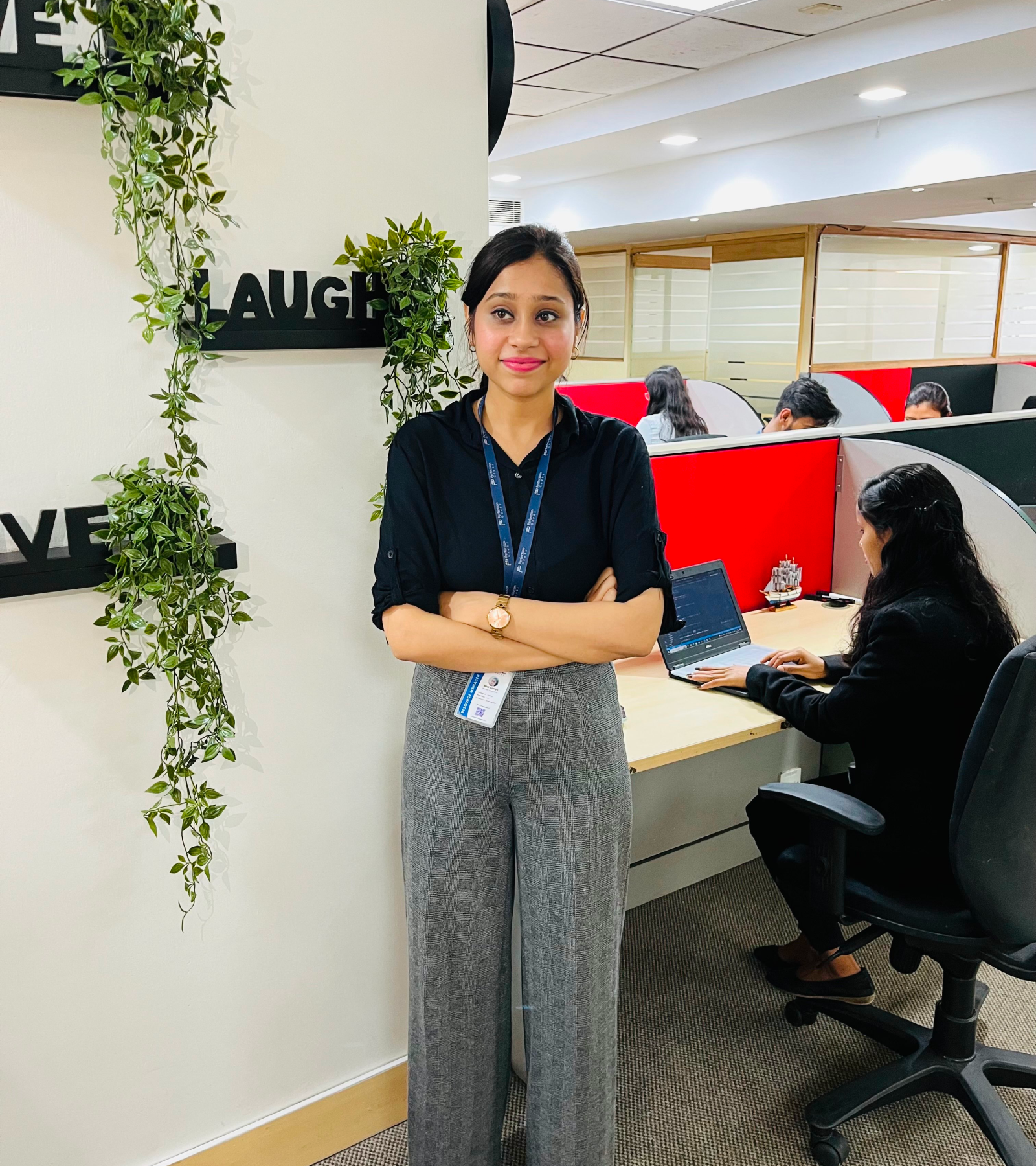What is the Software Development Lifecycle?

Sept, 17, 2024 11:56 PM
What is the Software Development Lifecycle?
The Software Development Life Cycle (SDLC) refers to a process that has clearly defined procedures for creating software of high quality. In more detail, the SDLC method is focused on the following stages that are essential to software development:
- Analysis of the requirements
- Planning
- Architectural design
- Software development
- Testing
- Deployment
This article will describe how the software development lifecycle operates, go deeper into each phase, and give examples to gain a greater knowledge of every phase.
What is the SDLC?

SDLC, also known as the Software Development Life Cycle, is an approach to creating software of the highest quality and the lowest cost within the shortest period feasible. SDLC is a well-structured set of stages that allow organizations to develop high-quality software that's tested and ready for use.
The SDLC includes six phases, according to the introduction. The most well-known SDLC designs include the waterfall model, the spiral model, and the Agile model.
How does the Software Development Life Cycle work?
SDLC is a method of reducing the costs of developing software while at the same time improving quality and reducing time to production. SDLC accomplishes these seemingly contradictory goals through a method that eliminates the usual problems that arise from software development projects. This plan starts by looking at the current systems for weaknesses.
Then, it determines the requirements for this new software. Then, it creates the software using the phases of analysis, planning, development, design, and deployment. By avoiding costly errors, such as failure to ask the user or the client for their feedback, SLDC can eliminate redundant revisions and post-facto fixes.
It's also essential to remember that there is a significant concentration on the testing stage. Because it is the case that SDLC is a method that repeats itself, it is essential to ensure that your code is of high quality throughout the entire process. A lot of companies put less time on testing. However, an increased test-oriented approach can help them save a lot of effort, time, and cash. Make sure you write the appropriate kinds of tests.
The next step is to look at the various stages in the software development life cycle.
Stages and Best Practices
The best practices followed or steps of SDLC ensure that the process is run in a seamless, efficient, and effective manner.
- Identify the current problems.
"What are the current problems?" The current phase of the SDLC requires input from all parties, such as salespeople, customers, experts from the industry, and programmers. Find out the strengths, shortcomings, and weaknesses of current systems and set improvements as the aim.
- Plan
"What do we want?" In this phase, the SDLC team determines the amount and type of resources needed to meet the analysis requirements. It also describes the risks involved and provides plans to mitigate those risks.
The team needs to determine the viability of the idea and then determine how they will be able to implement the project effectively with the least risk.
- Design
"How will we get what we want?" This stage of the SDLC begins by transforming the specifications for software into a design plan, also known as "the design specification." Everyone else then reviews this plan and provides suggestions and feedback. It's essential to create an approach for gathering and incorporating input from stakeholders into the document. In the event of a failure, it is likely to lead to costs that are overbudget at best and the complete failure of the project at the very worst.
- Build
"Let's create what we want."
In this phase, the actual development process begins. Each developer must follow the guidelines that have been agreed upon. Additionally, ensure that you have the right guidelines in place about codes and the best practices.
For example, create the nomenclature of files or create a variable's naming style, such as CamelCase. This will assist your team in creating organized and consistent code that is not only easier to understand but also tested in the following phase.
- Code Test
"Did we get what we want?" In this phase, we look for deficiencies and defects. We correct those deficiencies until the product complies with the specifications originally set out.
In short, we need to determine if the code is in line with the established standards.
- Software Deployment
"Let's start using what we got."
In this stage, the aim is to install the software in the production environment so that users can begin using the software. Many organizations opt to deploy the software through different deployment environments, like the staging or testing environment.
This permits any parties to be able to play around with the product before release to the public. Additionally, it allows last-minute mistakes to be discovered before the release of the product.
Extra: Software Maintenance
"Let's get this closer to what we want." The strategy is rarely out perfectly when it's in the realities. In addition, as the circumstances on the ground change, we have to keep up-to-date and develop the software to meet these changes.
The DevOps movement has altered the SDLC in certain ways. Developers now have to take on increasing the number of steps in the process of development. We also recognize the importance of reversing left. If developers and Ops teams utilize the same set of tools to monitor the performance of their applications and pinpoint any issues from the start to the finalization of the application, it gives them a common language and speeds up handoffs between teams.
App performance monitor (APM) tools are a great tool to use in development, QA, or production. This ensures that everyone is using the same toolset throughout the entire lifecycle of development.
What is the best way to SDLC tackle security?
Security is an integral element of every software development process. But, unlike traditional software development, which addresses security as an independent stage, SDLC addresses security at every stage of the process through DevSecOps methods.
DevSecOps is an extension of DevOps, a process that focuses on integrating security checks throughout the SDLC. It guarantees that software is secure from the initial conception to delivery and is ready to face any security threat. When it comes to DevSecOps, the team is subjected to security assurance processes like code review and analysis of the architecture penetration testing and automated detection. These integrate into IDEs and code repositories and even build servers.
How do I integrate DevSecOps into SDLC?
If you follow some of the good practices, DevSecOps could be incorporated into SDLC in many ways.
- Planning and requirement analyses: In this stage, security needs and security-related choices that can reduce the risk of risks and vulnerabilities are identified. Security design and best practices are also discussed in this section. What principles of security design and best practices are to be followed are also discussed in this section.
- Architectural Design: The design team employs the principle of security design as well as architecture to assess the possibility of dangers. This process involves threat modeling security, the control of access, encryption mechanisms, and analysis of risk in architecture.
- The Software Development and Test:Code reviews are conducted to ensure that software conforms to codes and standards, as well as security measures are put in place. Security vulnerability tests, such as penetration tests, are performed to find potential vulnerabilities.
- Deployment Automation: DevSecOps tools are employed to increase the security of an application. To ensure that software is securely deployed through firewalls, access controls as well as security configurations are set up.
- Maintenance: Security continues after deployment. The team should be monitoring this software to identify security weaknesses. The team should also be able to update it with patches for security and upgrades when needed.
Examples
The most popular SDLC instances or SDLC models are listed below.
Waterfall Model
The SDLC design is one of the most dependable and simple. This method lets us complete one phase and begin the next. Each phase is a distinct mini-plan, and every stage "waterfalls" into the next. The main drawback to it is the fact that tiny parts left unfinished could hinder the whole process.
Agile Model
It is an Agile SDLC model that divides products into phases and provides an operational product quickly. This method produces a series of releases. The testing of each release feeds back data that are then integrated into the following version. As per Robert Half, the drawback of this method is that the emphasis on interaction with customers can steer the project in an unwise direction in certain instances.
Iterative Model
This SDLC model is based on repetition. Developers develop a version quickly and with a minimal cost, and then they test and enhance it with fast and frequent versions. The biggest drawback here is that it will devour resources quickly in the absence of control.
V-Shaped Model
A re-invention from the waterfall design, this SDLC method tests at every step of development. Similar to the waterfall, this method could be obstructed by obstacles.
Big Bang Model
The high-risk SDLC model focuses most of its resources on development and is best suited for small-scale projects. It is not as thorough in the requirements definition stage that is found in other approaches.
Spiral Model
The most flexible of SDLC models The spiral model is similar in its approach to iterative models with its focus on repetition. The model of the spiral goes through the design, planning, and build phases repeatedly and gradually improves with every stage.
How to Choose an SDLC Model?
As you've learned from this article, there are a variety of SDLC models that are available. In the end, there's no universal solution. Instead, all models come with advantages and disadvantages that you should take into account, as well as the particulars of your company and your team.
A lot of people are quick to declare that agility is the ultimate winner in all circumstances. However, let's stop and consider whether this is a good idea.
If you study the development of agile methodologies, you'll discover that they developed in response to real or perceived issues with the methods, which were at the time the norm:
- excessive bureaucracy
- heavy emphasis on extensive documentation that could become obsolete without being even
- not enough collaboration with customers, sponsors, and stakeholders
- the feedback loops that took way too long
Thus, agile methods are designed to achieve exactly the opposite in a sense, by promoting lightweight methods that value continuous collaboration with the stakeholders, quick intervals of feedback, small repetitions, and also valuing the functional software that is delivered at short intervals rather than through formal documentation.
To Conclude
SDLC properly implemented can provide the highest degree of documentation and control. Developers know what they need to create and the reasons behind it. Everyone agrees on the goals in advance and can see a clearly defined method to achieve the desired goal. Everyone knows the costs and resources needed. Software Development Companywill be of great help.
Several pitfalls could turn the SDLC implementation into a hindrance to development instead of a tool that assists us. The failure to consider the requirements of clients and the entire stakeholder group could result in a lack of understanding of the system's requirements from the start. The advantages of SDLC only come into play when the plan is implemented strictly.
Strategy
Design
Blockchain Solution
Development
Launching
Testing
Maintenance
Contact US!
India

Plot 378-379, Udyog Vihar Phase 4 Rd, near nokia building, Electronic City, Phase IV, Sector 19, Gurugram, Haryana 122015
Copyright © 2025 PerfectionGeeks Technologies | All Rights Reserved | Policy
Strategy
Design
Blockchain Solution
Development
Contact US!
India 
Plot 378-379, Udyog Vihar Phase 4 Rd, near nokia building, Electronic City, Phase IV, Sector 19, Gurugram, Haryana 122015
USA 
1968 S. Coast Hwy, Laguna Beach, CA 92651, United States
Copyright © 2025 PerfectionGeeks Technologies | All Rights Reserved | Policy






